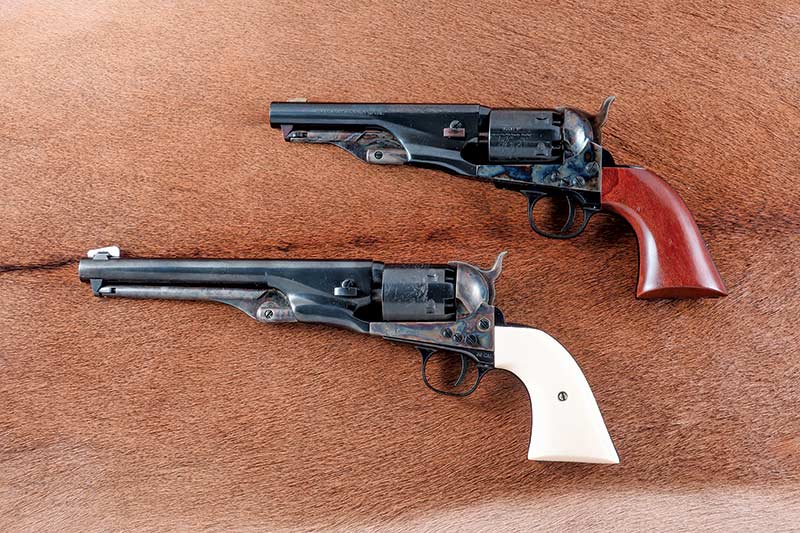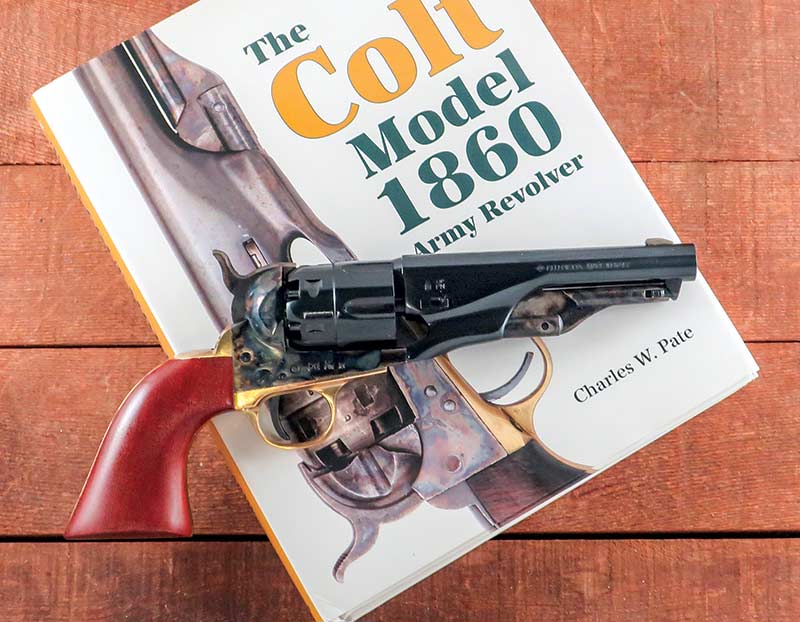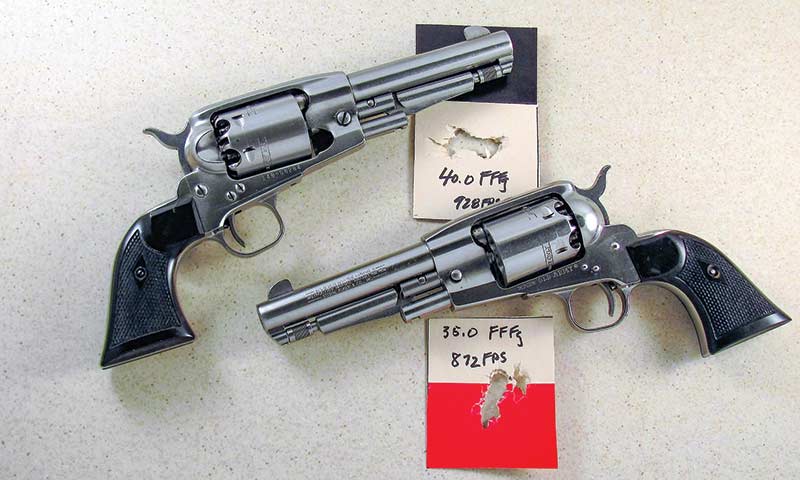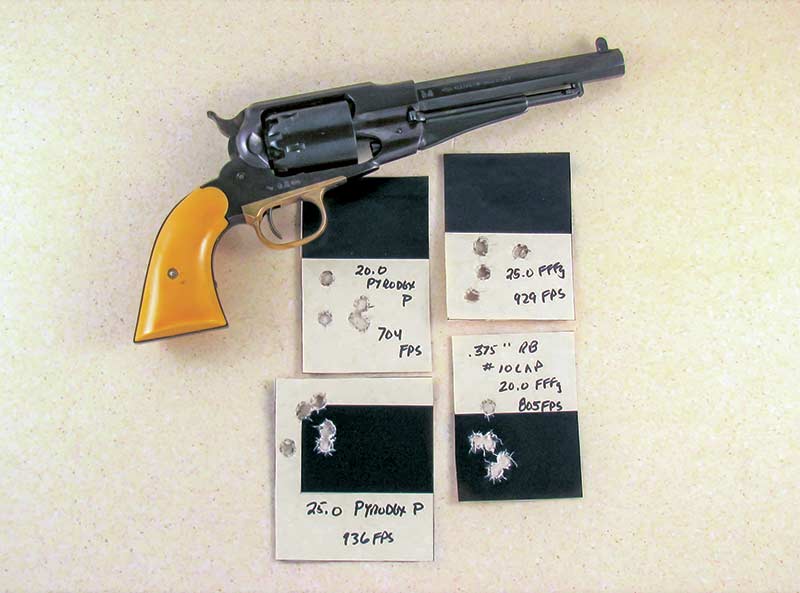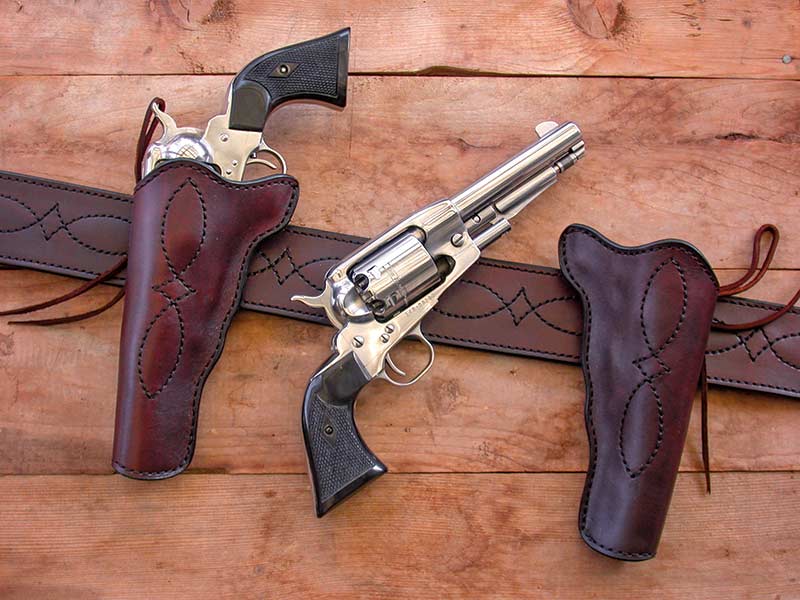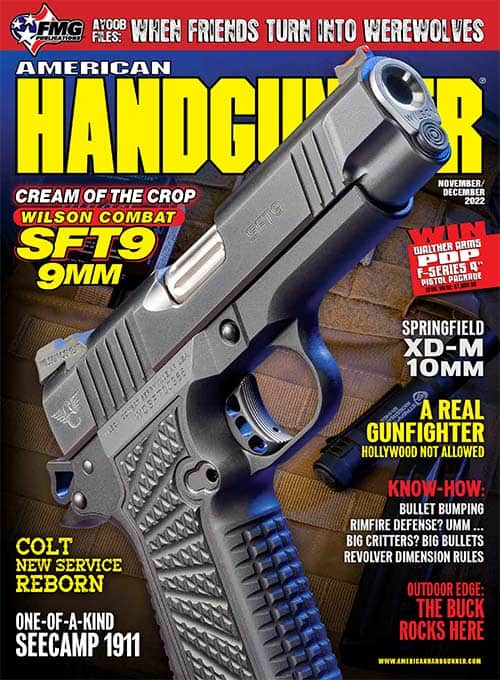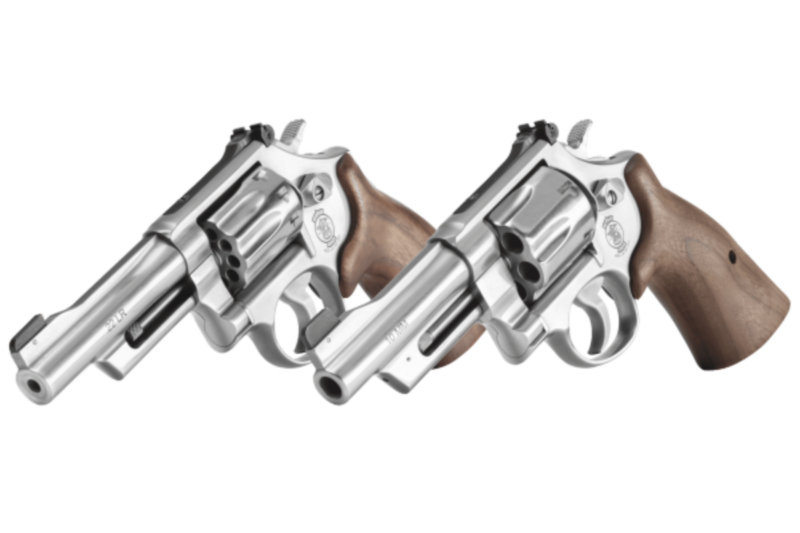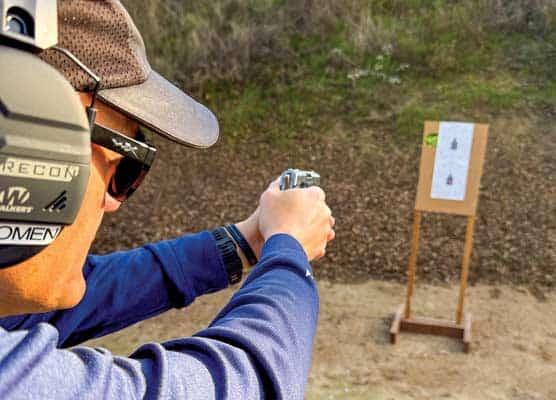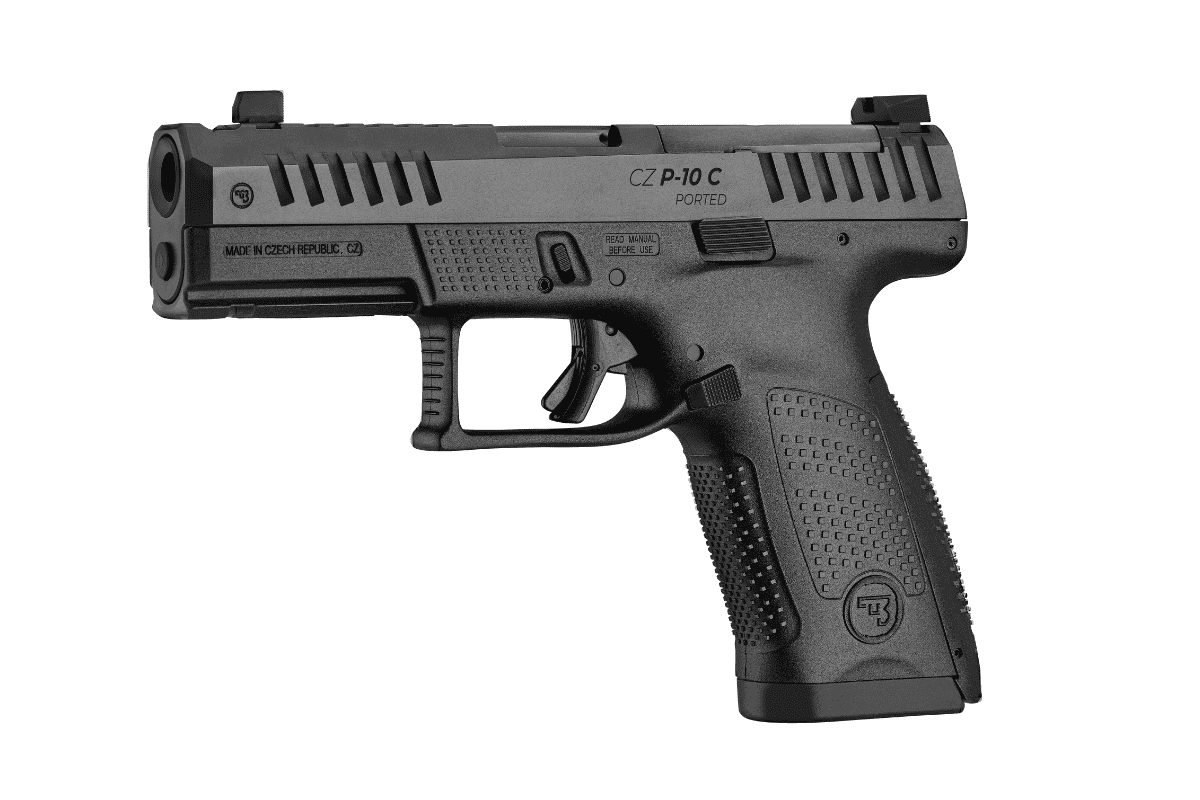The Sixgunner: Perfect Packin’ Percussion Pistols
When I was a kid, I read an article in a gun magazine about foraging with a percussion pistol. At the end of the Civil War, many soldiers had to walk home, feeding themselves along the way with what they could take with their cap & ball sixgun. The author of this particular piece decided to follow in their footsteps and spent several days walking across a wilderness area with nothing but his percussion pistol. He was well-fed when he came out the other side. That impressed me, and I have been a fan of percussion revolvers ever since. I soon purchased an original Colt 1860 Army, and then if my memory is correct, my first replica black powder pistol was an 1858 Remington made in Belgium.
Four Extra Shots
In 1836 Sam Colt came up with the first truly practical and workable revolver, the Colt Paterson. This revolver was a five-shot affair with a revolving cylinder in .28, .31, .34, or .40 caliber. As with all subsequent percussion revolvers, it was loaded from the front with powder and ball and then primed at the back of the cylinder with a percussion cap. However, unlike Colt revolvers that followed, the Paterson did not have a trigger guard — a folding trigger came down as the hammer was cocked. It was also quite fragile. However, it was still a tremendous improvement over single-shot pistols. Now a Texas Ranger carrying two pistols had 10 shots instead of two.
Their effectiveness was shown when a small band of Texas Rangers, probably 15 in number, led by Major John Coffee “Jack” Hays, encountered a large band of Comanches west of San Antonio in the Nueces Canyon. One of those Rangers was Samuel Walker. The Comanches expected each Ranger to empty his single-shot rifle and pistol and then be at their mercy. The Paterson made all the difference. As effective as the Paterson revolvers were, for whatever reason, Colt went bankrupt, and the Paterson factory was closed. The Texas Rangers were later drafted into United States service, with two of those Rangers being Jack Hays and Samuel Walker. In 1846 General Taylor sent then Captain Walker back to recruit volunteers from Maryland and acquire more Colt revolvers. The problem was there were no more Colt revolvers.
Two Sams
The two Sams, Colt and Walker, designed a new sixgun together. In late 1846, Sam Walker ordered 1,000 “heavy” revolvers, complete with several improvements. By heavy, Sam Walker meant larger in caliber than the Paterson and definitely stronger. These were true sixguns, six-shot, 9″ barrels and in .44 caliber. Colt contacted Eli Whitney Jr., who did have a factory, and the agreement was made for Whitney to produce the Colt revolver, which became known as the Model of 1847 Army Pistol, or more commonly, the Walker.
The Walker dwarfed the sleek little Paterson. It weighed 41/2 lbs., with a much larger grip, square-backed brass trigger guard, and a loading lever mounted under the barrel. Colt delivered such a large number of sixguns simply because Eli Whitney Jr. understood interchangeable parts. Any part from any Walker could be easily placed in any other Walker.
New And Improved
It did not take long for the Walker to be improved. In 1848 the Transitional Whitneyville Walker Hartford Dragoon appeared. The grip frame, the mainframe and working parts remained the same; however, the cylinder was shortened slightly, and the barrel was cut back to 71/2″. The First, Second and Third Model Dragoons followed over the next two years, with each one being a slight improvement over the preceding example.
The much lighter Colt 1851 Navy was a six-shot, .36 caliber revolver. James Butler Hickok carried a pair of ivory gripped Navies, and even with the coming of cartridge revolvers, he was still wearing them when he was shot from behind in 1876. The smaller-caliber .36 Navy was slightly enlarged to become the first .44 sixgun to be easily carried. This was the 1860 Army that many consider the most beautiful of all the percussion pistols. In 1861 Colt combined the streamlined profile of the 1860 Army with the 1851 Navy, and the result was the last full-sized Colt cap & ball sixgun, the 1861 Navy.
All of these pistols had long barrel lengths from 9″ in the case of the Walker, 8″ for the 1860, and 71/2″ for all the others. What about Perfect Packin’ Percussion Pistols? We know some cut the barrels to a much shorter length, especially on the 1860 Army, with one well-known example being an Avenging Angel. Today, shorter barrels, usually 51/2″, are available in Colt and Remington replica percussion pistols and the Ruger Old Army. Can these fill the same role as the original defined Perfect Packin’ Pistols? Could they be used for self-defense today?
Percussion Defense?
As I was thinking positively about this last question, I received confirmation of a sort. I correspond regularly with a reader in Arizona who is almost as old as I am. In his last letter, he shared what his go-to-town guns were. He says he will remain a dinosaur as his primary pistol, which he calls his Daily Carry Gun, is a replica 1849 Colt Pocket Pistol. The 1849 Colt was an extremely popular everyday carry gun, with nearly 1/3 of a million being produced. The quickest reload is still a second gun, especially with a single-action sixgun and imperative with a percussion pistol. His 1849 Colt is backed up by a replica 1862 Colt Police Pistol in his boot.
He does not feel the least bit undergunned and a check through history will show just how potent these pistols have been in the past. I have heard from two other readers who carry .44 Remington cap and ball revolvers daily. One is a long-distance truck driver traveling through many states, while the other drives daily in a city known for its anti-Second Amendment sentiment. The feeling of both of these men is if they do have to use or if they get stopped for some reason, they are carrying sixguns, which are not federally regulated as firearms.
Ruger Old Armys
In the early 1970s, Ruger reached back into history, looked at the cap-and-ball sixguns from the middle of the 19th century and decided those designs could be easily modernized. The result was the Ruger Old Army. Ruger used the same coil spring-operated action in the Old Army as found in their extensive line of single-action sixguns. They also offered it in the much easier-to-clean stainless steel, made the loading lever stronger and easier to remove and replace, and provided easily adjustable sights. The gun is rugged, simple and extremely accurate. Ruger stopped production of the Old Army more than 10 years ago, and I doubt we will ever see it again. Over the years, I have added more Old Armies, both blue and stainless, with adjustable sights, as well as three with traditional fixed sights. One was an 8″ version, while the other two were a pair of 51/2″ easy-handling sixguns.
These 51/2″ Old Armies perform well with Speer’s 0.457″ round ball, Thompson’s Lubed Wad and CCI’s #11 percussion cap. My commonly used three powders are used in both 35.0 and 40.0 (by volume) charges. Those powders are Goex FFFg black powder, Hodgdon’s Triple-7 FFFg and Pyrodex P. Charges are measured with a Thompson/Center powder measure. With 35.0 grains of Triple-7 FFFg, muzzle velocity is 925 fps with six shots in 13/8″ at 20 yards. Moving up to 40.0 grains of Triple-7 FFFg yields 1,130 fps and a group of 13/4″. These velocities are right at, or even exceed, those of the longer-barreled Old Army.
There is no doubt the Ruger Old Army is the finest percussion pistol ever offered. Liking the 51/2″ Old Armies mentioned above, I decided to take a step further to give me more versatility starting with a pair of adjustable sighted, longer-barreled original Old Armies. Both of these, one stainless steel and the other blued were fitted with Super Blackhawk grip frames, giving them an 1840s Colt Dragoon look; they are one of the few sixguns I can handle with these grip frames without getting my knuckles rapped every time I fire. They were then turned over to Milt Morrison to have the barrels cut back to easier handling and packing 51/2″ barrel lengths.
Black Powder Power
Just how potent are black powder loads? The standard .45 ACP Hardball load of a 230-grain bullet at 820 fps has long been regarded, and rightly so, as a highly dependable fight-stopping load. This can be duplicated in a Ruger Old Army Percussion Pistol with a 220-grain conical bullet over 35 grains of Pyrodex. The standard 140-grain round ball at 1,000 fps is an easy handling and powerful load.
Production Models
During the original days of the cap and ball revolvers from about 1836 until the arrival of cartridge firing sixguns in the late 1860s, Perfect Packin’ Percussion Pistols were not easy to find. Certainly, individual owners cut the barrels of their pistols to make them easier to carry, but what about short-barreled production cap and ball sixguns? It is easy to say there were none. However, this is another example of “Never Say Never.” In his excellent book, Colt Model 1860 Army Revolver, which is a must-have for anyone interested in these wonderful Percussion Pistols, author Charles Pate states there were at least one each 1860 Army revolvers made with 41/2″, 51/2″ and 61/2″, and also interestingly enough, one with a 10″ barrel.
Today, Taylors & Co. offers 51/2″ 1860 Army and 1851 Navy easy packing pistols. A most interesting version has just been introduced. The Ace is a 3″ 1858 Remington without a loading lever. It fits very nicely into a pocket. Taylor’s & Co. and Cimarron Firearms offer blue and stainless steel 51/2″ 1858 Remingtons, and I found a 51/2″ 1861 Navy .36 at Dixie Gunworks.
For more info: TaylorsFirearms.com, Cimarron-Firearms.com
Subscribe To American Handgunner

Get More Revolver Content Every Week!
Sign up for the Wheelgun Wednesday newsletter here:

